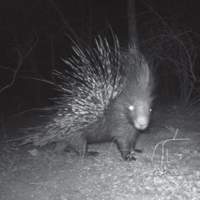Blessing the rains down in Africa: spatiotemporal behaviour of the crested porcupine Hystrix cristata (Mammalia: Rodentia) in the rainy and dry seasons, in the African savannah

All claims expressed in this article are solely those of the authors and do not necessarily represent those of their affiliated organizations, or those of the publisher, the editors and the reviewers. Any product that may be evaluated in this article or claim that may be made by its manufacturer is not guaranteed or endorsed by the publisher.
Authors
The assessment of habitat selection and temporal patterns of activity rhythms is paramount for wildlife conservation. Studies on behavioural ecology of wild mammals are particularly challenging in tropical areas, mostly when involving rare or elusive species. Despite being a common species in Italy, the crested porcupine Hystrix cristata is threatened of extinction throughout most of its sub-Saharan range. All available information on the ecology of this species has been collected in Italy, whereas no data is present in the scientific literature on spatiotemporal behaviour of this large rodent in Africa. In this work, we attempted to determine habitat selection and temporal patterns of activity rhythms of the crested porcupine in northern Benin and neighbouring countries, through intensive camera-trapping. We collected a total of 146 records of crested porcupine, 91 in the dry season (October-March) and 55 in the rainy season (April-September). Porcupines used most habitats in proportion to their local availability, while selecting rock outcrop formations (possibly used as shelter sites) and avoiding open areas, wetlands and gallery forests. A mostly nocturnal behaviour was confirmed throughout the year, with some diurnal activity at the start and at the end of the rainy season. The importance of rains in determining birth peak has been also showed, with juvenile individuals always observed at the start and at the end of the rainy season. Full moon always inhibited activity of this large rodent, most likely evolved as an antipredatory behaviour to limit encounters with potential predators (common leopard Panthera pardus, spotted hyaena Crocuta crocuta and honey badger Mellivora capensis) and humans. Poaching pressure towards porcupines in West Africa is strong. Porcupines are killed for the traditional medicine, for their meat and because they are widely considered as a crop pest. This assessment should therefore be used as a basic tool to design conservation plans to preserve this rodent species in its native range.
How to Cite
PAGEPress has chosen to apply the Creative Commons Attribution NonCommercial 4.0 International License (CC BY-NC 4.0) to all manuscripts to be published.







